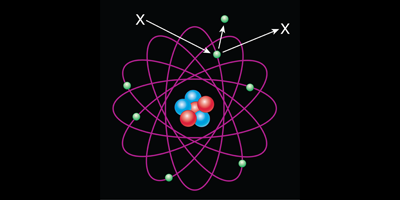Turning from Nuclei to Electrons for Dark-Matter Detection
Direct detection experiments of dark matter generally look for products of the interaction of the dark-matter particles with the nuclei of the detector. However, such nuclear recoil signals cannot typically be produced with sufficient strength by dark-matter particles of masses less than about 1 giga-electron-volt ( ). Recently, Rouven Essig of Stony Brook University, New York, and colleagues suggested that in events in which such low mass dark-matter particles interact with the atomic electrons of the target, rather than off the nuclei, they could ionize the atoms, and this could produce an observable signal.
Now, these theorists, working with two members of the XENON10 Collaboration, have tested this idea by re-examining data previously used by the collaboration to obtain limits on dark-matter particles in the few- region. Where the previous analysis had been looking for nuclear recoils, the new analysis, reported in Physical Review Letters, instead looks for electrons as evidence of ionization, and is able to set limits on dark-matter particles with masses far below , the first direct-detection limits in this mass range.
These results are significant in themselves, but perhaps more important is the demonstration of the potential of this technique. Future experiments specifically designed to take advantage of this technique should be able to probe significant new regions in dark-matter parameter space. – Stanley Brown





